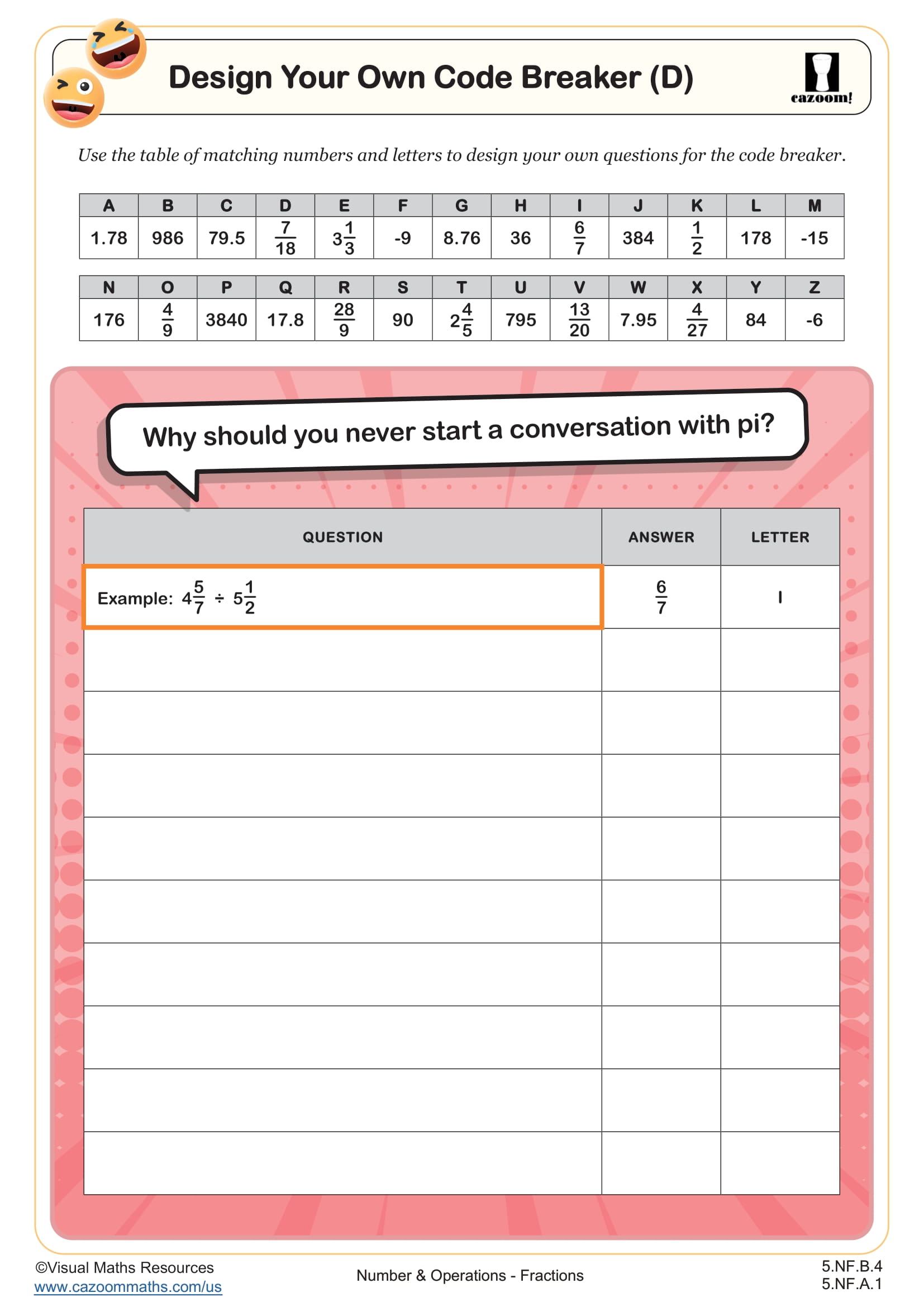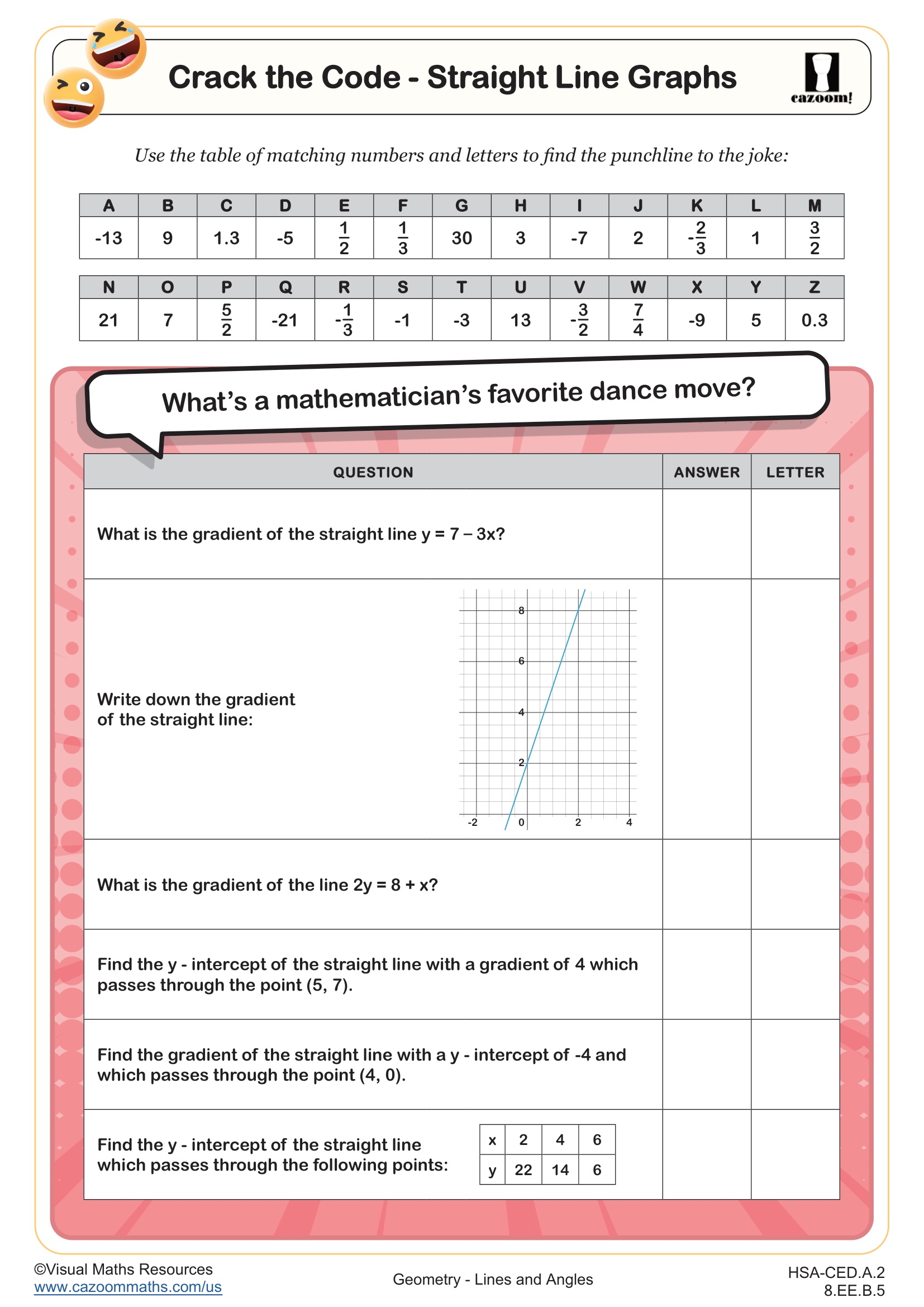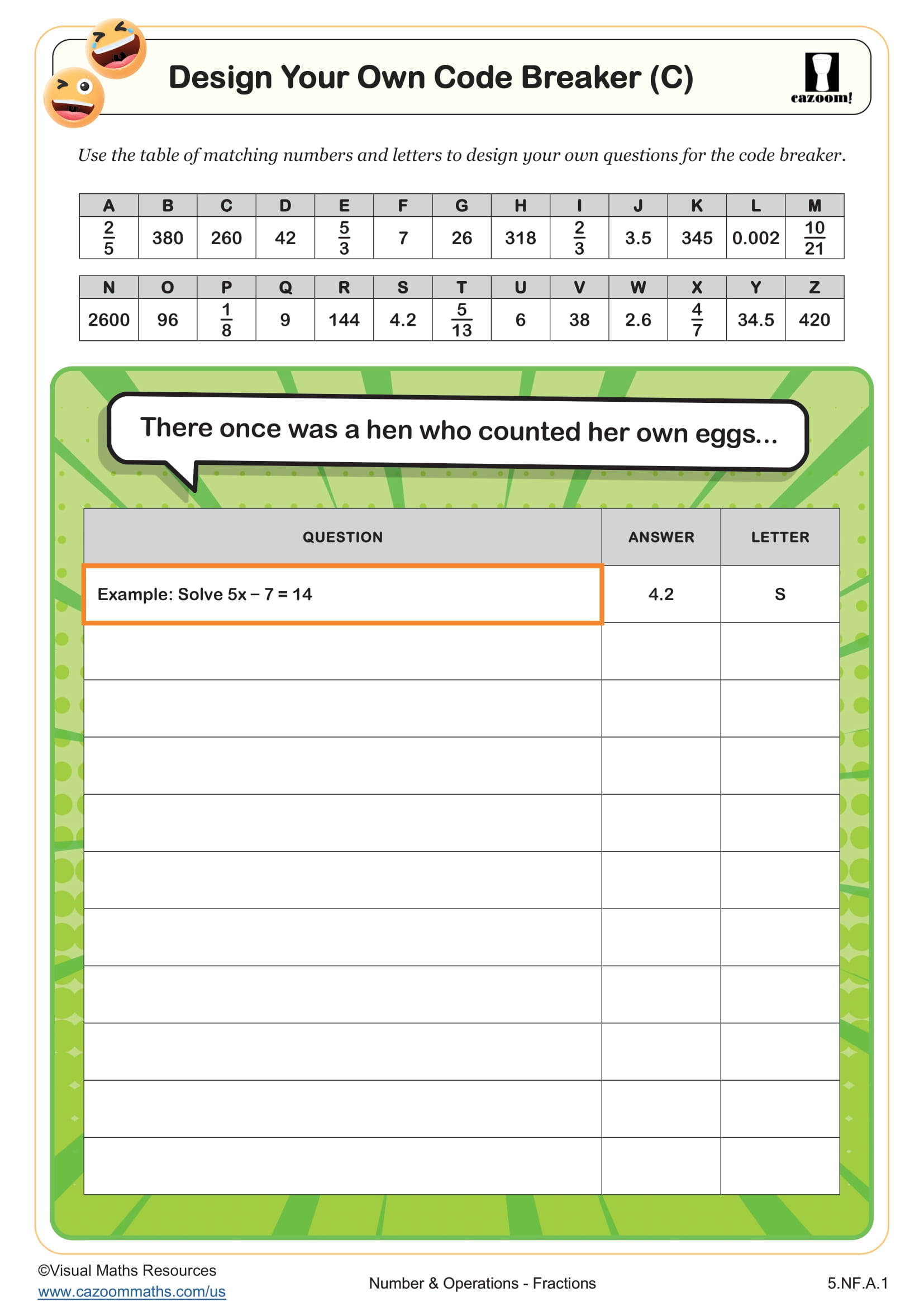Design Your Own Code Breaker (D) WORKSHEET
Apply and extend previous understandings of multiplication to multiply a fraction or whole number by a fraction. a. Interpret the product (a/b) × q as a parts of a partition of q into b equal parts; equivalently, as the result of a sequence of operations a × q ÷ b. For example, use a visual fraction model to show (2/3) × 4 = 8/3, and create a story context for this equation. Do the same with (2/3) × (4/5) = 8/15. (In general, (a/b) × (c/d) = ac/bd.) b. Find the area of a rectangle with fractional side lengths by tiling it with unit squares of the appropriate unit fraction side lengths, and show that the area is the same as would be found by multiplying the side lengths. Multiply fractional side lengths to find areas of rectangles, and represent fraction products as rectangular areas.
Design Your Own Code Breaker (D) WORKSHEET DESCRIPTION
These Code Breaker resources will encourage your learners to use and apply problem - solving and numeracy skills as they design their own questions to reveal the answer to a maths based joke.
Teachers and parents can suggest themes for questions or let your students get creative and demonstrate their skills. In this version learners will answer all questions with fractions, decimals with up to 2 decimal places, positive and negative integers up to 10,000. Students need to create 20 questions for their code breaker.
Humour has been shown to increase retention of information, improve understanding, and stimulate cognitive processing so why not add some laughter to your maths lessons, homework assignments or home learning?!

RELATED TO Design Your Own Code Breaker (D) WORKSHEET
Frequently Asked Questions
This design your own code breaker (d) worksheet is designed for students in 5th Grade and aligns with Common Core State Standards.


